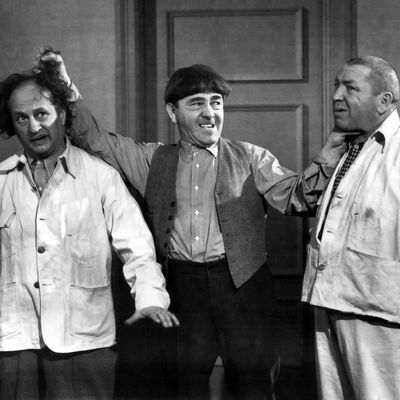
The staple of slapstick-comedy medicine — that if a blow to the head causes amnesia, a second one can restore memory — makes a sort of satisfying sense. Besides efficiently wrapping up a plot point, the notion has a certain amount of neat symmetry to it: What goes up must come down. What goes around comes around. What gets knocked out can get knocked back in.
Except, as psychologist Mary Spiers recently wrote on the Conversation, the idea “is so far off from neurological fact that it is laughable to scientists and physicians.” While an injury can cause memory loss, another injury can’t negate the effect of the first one — and yet the idea remains firmly embedded in our collective consciousness. In one 2004 study on brain-injury misperceptions, more than 40 percent of survey respondents agreed with the statement, “Sometimes a second blow to the head can help a person remember things that were forgotten.”
And so, in her Conversation column, Spiers, a professor at Drexel University, tried to figure out the origins of the (delightfully named) “double-conk” theory. After digging through all the old medical literature she could find on amnesia, Spiers concluded that the idea made its way into mainstream science at the beginning of the 19th century, thanks to a French doctor named Francois Xavier Bichat:
Bichat was a young up-and-coming anatomist who believed that the two brain hemispheres were identical in structure and function. In a healthy brain, he reasoned, the hemispheres are in balance with each other and therefore in symmetry. Therefore, if a person is hit on one side of the head, the brain can lose balance, causing confusion or mental derangement.
The cure, in Bichat’s opinion, was a blow to other side. He wrote that “observations so frequently repeated of an accidental blow upon one side of the head having restored the intellectual functions, which had long remained dormant in consequence of a blow received upon the other side.”
But even then, the mystery wasn’t quite solved — in his writing, Bichat didn’t explain or offer any support for the “double conk,” suggesting that it was already a familiar concept to many. Most likely, Spiers argued, was that the concept was a natural derivation of the way people thought about the brain at the time: In the 1800s, “the thinking was that concussion, or any brain injury, did not cause permanent structural or neuronal damage but a general ‘commotion’ or ‘derangement” of the brain,’ she wrote. Memories, then, weren’t permanently lost, only lost in the shuffle — or “dormant,” as Bichat put it — and so could be recovered once the brain righted itself again.
The idea began losing steam in the mid-1800s, as doctors began to conclude that memories could be permanently damaged. But outside of the medical world, the double conk lived on, and still lives on today. “It’s hard to change a myth with a 50-year head start,” Spiers wrote — especially one that provides such a convenient plot point.




